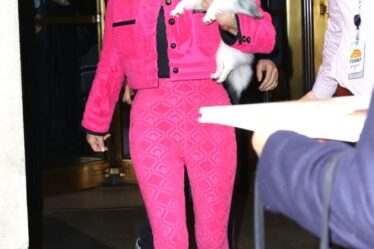
While Gucci’s revenue rose to €9.7 billion ($10 billion) last year, surpassing pre-pandemic sales levels, its environmental footprint has followed a different trend line, falling 15 percent compared to 2019, according to the company’s annual impact report published Tuesday.
Gucci and its parent company Kering have positioned themselves at the forefront of efforts to operate more sustainably, but their public goals have thus far focused on reducing impact relative to sales. That means if sales keep growing, so could their environmental footprints.
But the report suggests the company is making progress towards decoupling financial growth from environmental impact, one of the fashion industry’s biggest sustainability challenges.
Gucci measures its impact using an environmental profit & loss account (EP&L), which puts a financial value on factors like emissions, land use, waste and water pollution across its full supply chain. While the value of the EP&L inched lower between 2018 and 2019, indicating reduced impact, the decrease between 2019 and 2021 is the first time it has fallen substantially in absolute terms. (This leaves aside 2020 when the pandemic suppressed both sales and associated environmental impact.)
Gucci owner Kering has also broken the link between growth and impact for the first time. The value of its EP&L, which reflects all the luxury conglomerate’s brands and the impact of their supply chains, was 10 percent lower last year than in 2019, while its overall revenue was 10 percent higher.
The big question is whether this decoupling of growth and impact can be maintained, particularly as Kering has outlined ambitious goals for Gucci, by far its largest brand, to keep growing its revenue to €15 billion in the medium term.
The brand has already achieved its current target to reduce its overall footprint 40 percent relative to sales by 2025, compared to a 2015 baseline. While the framework for such goals are set at a corporate level, Gucci’s next target is likely to require an absolute reduction, said Antonella Centra, the brand’s general council and executive vice president for corporate affairs and sustainability.
“I think that’s the expectation of the market,” she said. “Of course this means raising the bar and increasing the challenge, but there is a lot of room for potential innovation and potential reduction.”
The Path to Sustainable Growth
The business case for developing more sustainable products and business models is growing as consumer interest in the topic rises. If Gucci can unite responsible business practices with the fashion appeal that has powered its spectacular turnaround under designer Alessandro Michele and chief executive Marco Bizzarri, “this is the perfect win-win for the customer,” said Robert Triefus, Gucci’s executive vice president of brand and customer engagement.
Meanwhile, regulators are cracking down on greenwashing in fashion, taking aim at the self-regulated standards and certifications the industry leans on to back up sustainability claims and ratcheting up the pressure on companies to ensure their sustainability efforts are credible.
Gucci has put in place an external committee of experts that works with a cross-functional group internally to ensure advertising claims and product labels have been verified and have substance behind them. “We anticipated this and we have a serious procedure in place,” said Centra.
The reductions the brand has achieved so far have largely been driven by a shift to renewable energy in its own operations, efforts to source raw materials with a lower environmental impact and savings resulting from reusing and recycling materials leftover from manufacturing.
Going forward, it is placing particular focus on scaling up investment in regenerative agriculture and building on efforts to establish more circular business practices.
So far, these make up a small proportion of the brand’s overall business. They include initiatives like a curated selection of vintage items sold through Gucci Vault and the Gucci Off The Grid collection, which promotes products made from more sustainable materials.
Giving products a second life is an area of particular focus. On Tuesday the brand announced a strategic partnership with nonprofit the Ellen MacArthur Foundation to support these initiatives and help it plug into conversations around circularity at the regulatory level.
For more BoF sustainability coverage, sign up now for our new Weekly Sustainability Briefing by Sarah Kent.



